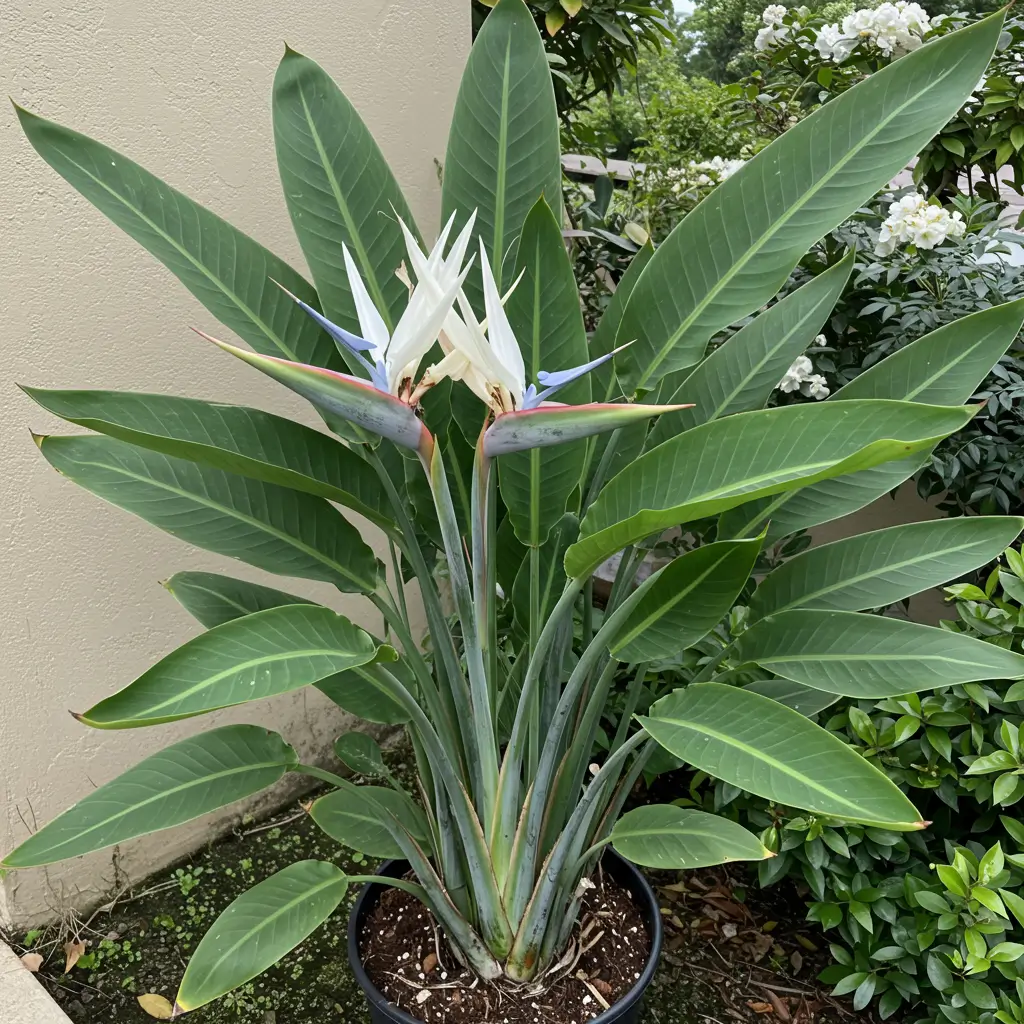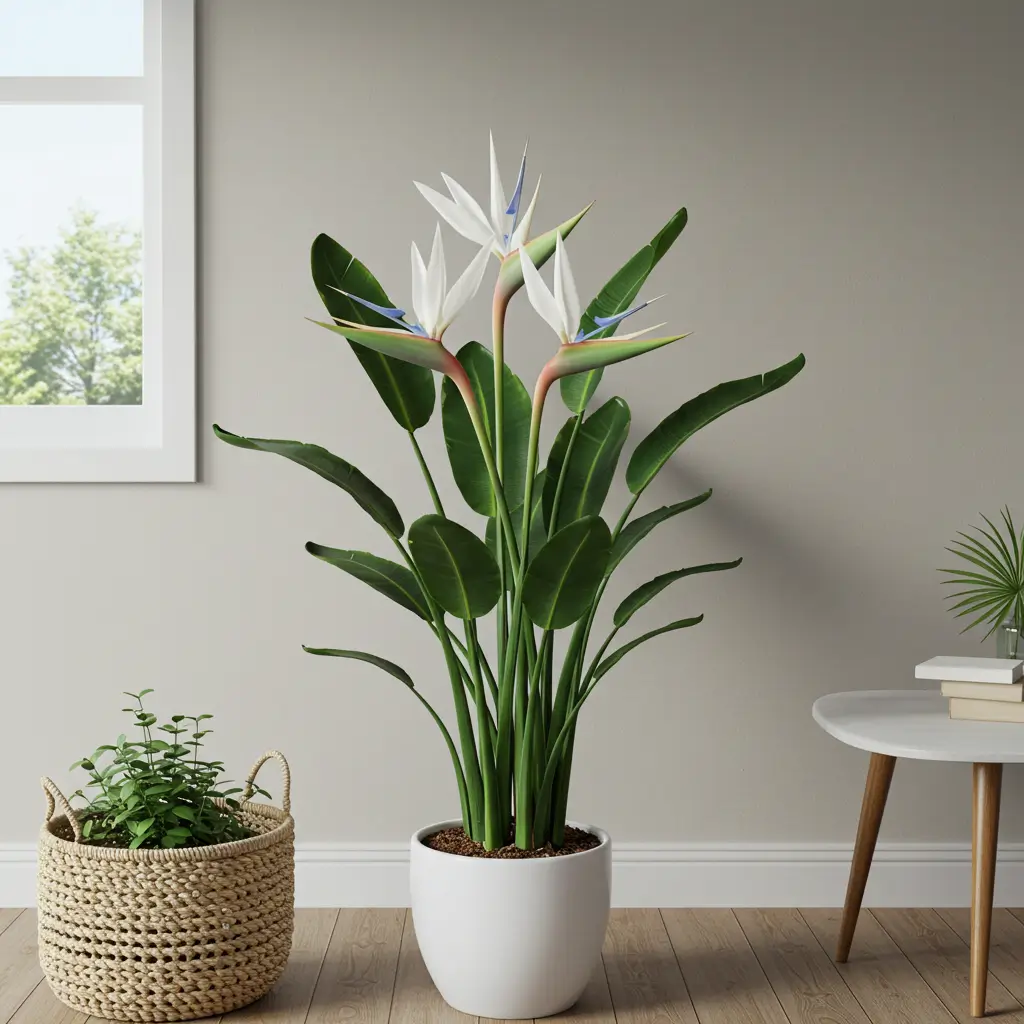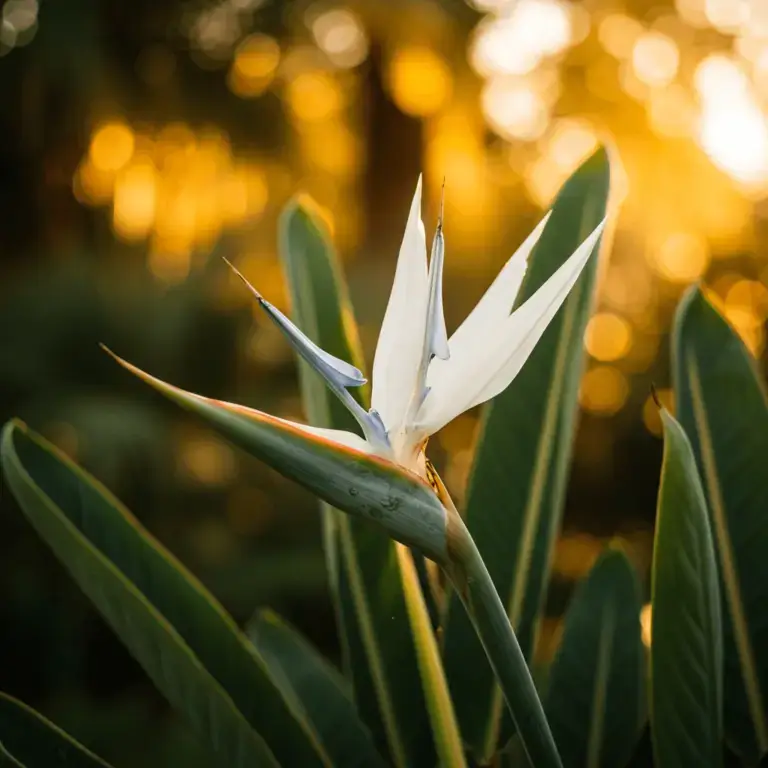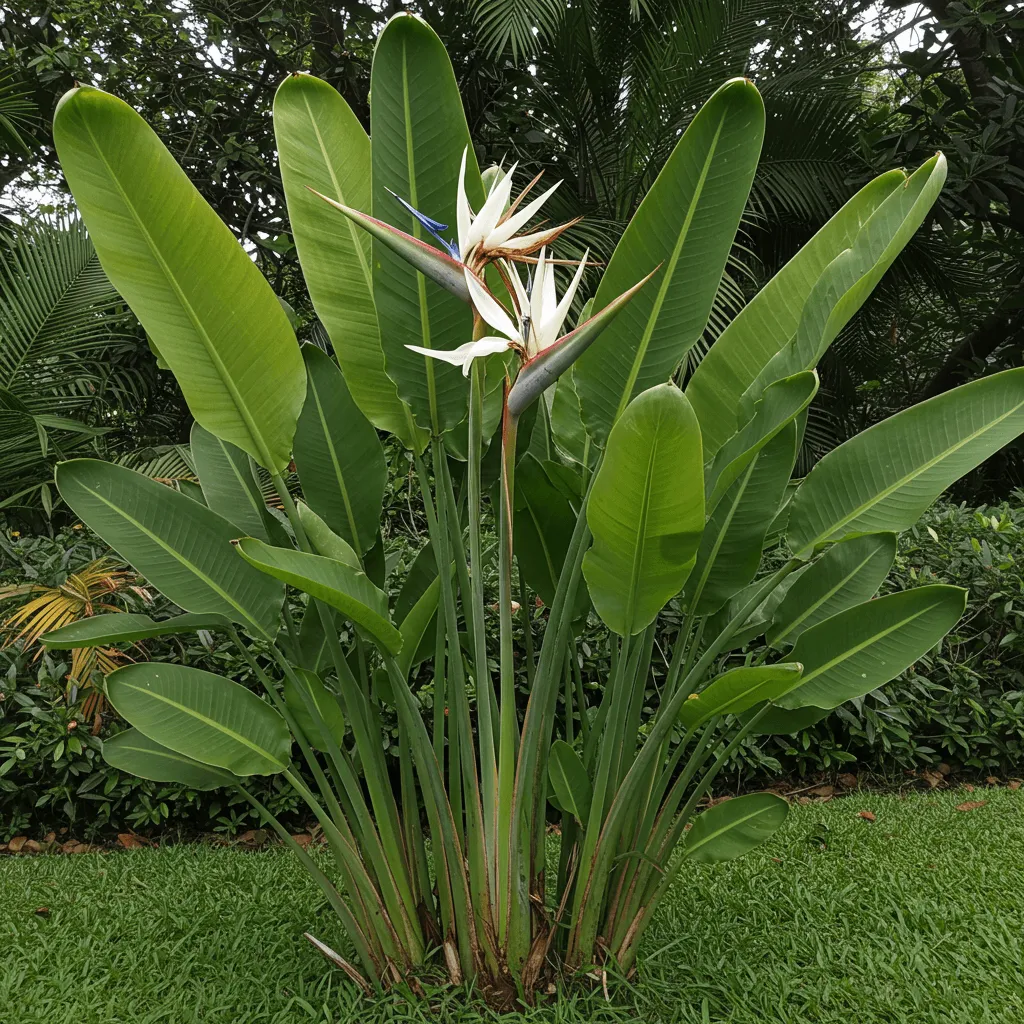The White Bird of Paradise (Strelitzia nicolai) is a striking, tropical plant admired for its large, banana-like leaves and elegant, bird-shaped appearance. Native to South Africa, this plant adds a touch of the tropics to any space, whether grown indoors or outdoors. However, one common question among plant enthusiasts is: Does the White Bird of Paradise need full sun?
Understanding its sunlight requirements is essential for maintaining a healthy, thriving plant. In this comprehensive guide, we’ll explore the plant’s natural habitat, ideal light conditions, detailed care tips, and practical solutions for common sunlight-related issues. Whether you’re a novice gardener or a seasoned plant parent, this article will equip you with everything you need to know to help your White Bird of Paradise flourish.
Understanding the White Bird of Paradise and Its Natural Habitat
Origin and Native Habitat
The White Bird of Paradise is native to the warm, subtropical regions of South Africa. In the wild, it grows in coastal forests and riverbanks, where it receives plenty of bright, indirect sunlight filtered through taller trees. The plant has adapted to these conditions by developing large leaves to maximize light absorption, a crucial feature that helps it thrive in various environments.
Growth Habit and Characteristics
This tropical evergreen can grow up to 20 feet tall outdoors and typically 5-6 feet indoors. Its broad, fan-like leaves give it a dramatic, tropical look, making it a popular choice for homes and gardens alike. The leaves resemble banana leaves, but their vertical growth habit gives the plant a more architectural appearance, making it an ideal choice for modern interior design.
Why Sunlight Matters
Sunlight is vital for photosynthesis, the process that fuels growth. For the White Bird of Paradise, adequate sunlight ensures:
- Larger, healthier leaves
- Stronger, upright stems
- Vibrant, lush foliage Without enough light, the plant becomes leggy, weak, and dull. Sunlight also plays a critical role in flowering, although blooms are more common in outdoor specimens.
Does White Bird of Paradise Need Full Sun or Partial Shade?

Full Sun Benefits
The White Bird of Paradise thrives when exposed to 6-8 hours of direct sunlight daily. Full sun encourages:
- Rapid growth – Increased light means faster photosynthesis.
- Robust stems – Sunlight helps develop thicker, more resilient stems.
- Vibrant leaves – Bright light enhances leaf color and size.
- Potential for flowering – Outdoor plants that receive ample sunlight are more likely to produce their characteristic white and blue flowers.
Can It Tolerate Partial Shade?
Yes, this plant can tolerate partial shade, but growth will slow, and leaves may become smaller or pale. While occasional shade is fine, prolonged low-light conditions can stunt growth. In low light, the plant prioritizes survival over growth, resulting in smaller, less vibrant foliage.
Indoor vs. Outdoor Light Requirements
- Outdoor: Place in a spot with morning sun and some afternoon shade in hot climates. Outdoor plants benefit from at least 6 hours of direct sunlight daily but should be protected from harsh afternoon rays in very hot climates.
- Indoor: Position near a south- or west-facing window for best results. Indoors, the plant requires bright, indirect light and may benefit from grow lights if natural light is insufficient.
Signs of Sunlight Stress
- Too much sun: Brown, scorched leaf edges. Prolonged exposure to intense sunlight can damage the leaf tissue, causing it to dry out and turn crispy.
- Too little sun: Leggy growth, smaller leaves, and slower growth. Insufficient sunlight prevents the plant from photosynthesizing effectively, resulting in weak, stretched stems.
Best Growing Conditions for a Healthy White Bird of Paradise
Sunlight Requirements
- Outdoor: 6-8 hours of bright, direct sunlight. Outdoor plants should receive morning sunlight and partial afternoon shade in hot climates to prevent leaf scorch.
- Indoor: Bright, indirect sunlight near a south- or west-facing window. A lack of sunlight indoors can be compensated with grow lights.
Soil and Watering Needs
- Use well-draining soil with a mix of peat, perlite, and sand. The soil should retain some moisture but drain excess water to avoid root rot.
- Water when the top 1-2 inches of soil are dry. Overwatering is a common issue with indoor plants, so ensure the pot has drainage holes.
- During active growth in spring and summer, water more frequently; reduce watering in fall and winter.
Humidity and Temperature
- Prefers warm temperatures (65-85°F / 18-29°C). Avoid exposure to temperatures below 50°F (10°C), which can cause leaf damage.
- Enjoys moderate to high humidity; mist occasionally in dry environments or use a humidifier to maintain moisture levels.
Fertilizer Tips
- Apply a balanced fertilizer monthly during the growing season. A fertilizer with an NPK ratio of 10-10-10 works well.
- Avoid over-fertilizing to prevent leaf burn. Excess nutrients can accumulate in the soil and damage the roots.
How to Grow White Bird of Paradise Indoors Successfully

Choosing the Right Spot
- Place near a bright window with direct or bright, indirect sunlight. Southern and western exposures are ideal.
- Rotate the plant every few weeks to ensure even growth and prevent the plant from leaning toward the light.
Supplementing Light with Grow Lights
- Use full-spectrum grow lights if natural sunlight is insufficient. Choose LED grow lights that mimic natural sunlight.
- Position lights 12-18 inches above the plant for optimal results.
Maintaining Proper Indoor Conditions
- Keep humidity levels at 50% or higher. The plant will adapt to average indoor humidity but thrives with added moisture.
- Avoid placing the plant near drafts, heaters, or air conditioners.
Common Indoor Challenges
- Weak stems: Move the plant to a brighter spot. Weak, floppy growth indicates insufficient light.
- Small leaves: Increase light exposure or switch to a stronger grow light.
- Leaf splitting: This is a natural adaptation to allow wind to pass through the foliage. Keep the leaves clean and avoid excessive handling.
For more detailed tips on caring for your White Bird of Paradise indoors, check out this comprehensive guide: How to Grow White Bird of Paradise Indoors Successfully.
Common Sunlight Issues and How to Fix Them
1. Sunburned Leaves
- Signs: Brown, crispy patches on leaves.
- Fix: Move the plant to a location with filtered sunlight.
- Prevention: Introduce the plant to direct sun gradually.
2. Leggy Growth and Small Leaves
- Cause: Low light conditions.
- Fix: Relocate to a brighter window or use grow lights.
- Prevention: Rotate the plant regularly to ensure even exposure.
3. Drooping or Curling Leaves
- Cause: Insufficient sunlight or inconsistent watering.
- Fix: Adjust light exposure and maintain a consistent watering schedule.
- Prevention: Stick to a regular watering routine and monitor soil moisture.
4. Yellowing Leaves
- Cause: Overwatering, low light, or nutrient deficiency.
- Fix: Identify the underlying issue by adjusting watering practices, improving light conditions, or fertilizing as needed.
FAQs About White Bird of Paradise Sunlight Needs
1. Can White Bird of Paradise Grow in Low Light?
While it can survive in low light, growth will slow dramatically. For healthy growth, bright, indirect light is essential. Consider supplementing with grow lights if natural light is limited.
2. How Do I Know If My Plant Needs More Sun?
Look for small leaves, slow growth, or pale foliage. Move the plant to a brighter location if needed.
3. How Can I Acclimate My Plant to More Sunlight?
Gradually increase exposure over 7-10 days, starting with 2-3 hours of direct sunlight and adding more each day.
4. Should I Move My Plant Indoors in Winter?
Yes, if temperatures drop below 50°F (10°C). Place it near a bright window indoors. Reduce watering and avoid fertilizing during dormancy.
5. Why Are My Plant’s Leaves Splitting?
Leaf splitting is a natural phenomenon, especially in windy conditions. It allows the plant to withstand strong breezes in its native environment.
Conclusion
The White Bird of Paradise thrives with 6-8 hours of bright sunlight but can tolerate partial shade. Understanding its natural light needs, along with proper watering and soil care, ensures a healthy, vibrant plant. If you’re growing one indoors, place it in a bright, sunny window and consider adding grow lights if necessary.
Regularly monitor the plant’s condition, addressing signs of light stress or watering issues early to maintain its lush appearance. With proper care, the White Bird of Paradise will become a stunning focal point in your home or garden.


